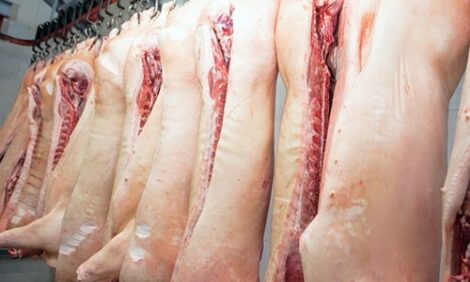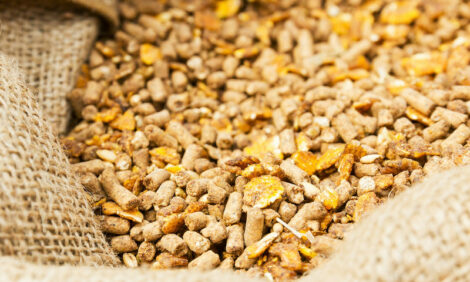Canadian BSE case a positive for the pork industry
US Weekly Hog Outlook, 23rd May 2003 - Weekly review of the US hog industry, written by Glen Grimes and Ron Plain.
|
Need a Product or service?
|
|

Ron Plain |
Cash hog prices ran into a speed bump this week and ended the week some below a week earlier on average.
Top live prices on Friday for select markets were: Peoria $42, St. Paul $40, Sioux Falls $N.A., and interior Missouri $40. Weighted average carcass prices for 185 pound carcass with 0.9-1.1 inches backfat 6 square inch loin 2 inches deep by area on Friday morning were: Western Cornbelt $59.10, Eastern Cornbelt $59.62, Iowa-Minnesota $59.28, and Nation $59.37.
The big news this week in the livestock industry was the announcement from Canada that a cow had died from BSE (mad cow) disease. The market reaction to date in the beef sector in the U.S. has been minor. The prices of live cattle futures at close on Thursday were from $0.12 to $1.35 lower than the close on Friday, May 16th. Box beef prices continued to set record high prices after the mad cow announcement.
Unless negative consumer psychology kicks in quite strong in the U.S., the results of this incident probably will be positive to the U.S. beef industry. About 6% of our beef supply is imported from Canada as product or live cattle. The U.S. as well as Japan and South Korea have banned beef imports from Canada as well as any other ruminant animals.
Without substantial negative psychology about eating beef developing in the U.S., the end result will be higher cattle and beef prices in the U.S. as a result of this event.
Certainly this will be devastating to the Canadian beef industry if the trade bans last very long. It will be good for beef eating Canadians for the prices will be substantially lower than without this event.
We believe this mad cow incident will be positive to the pork industry whichever way the U.S. consumer reacts. If the psychology is negative to beef, consumers will probably eat more pork --- this is what happen in Japan in 2001 with their outbreak of mad cow disease --- and if consumers pay no significant attention to the announcement, beef prices in the U.S. will be higher than they would have otherwise, which will be positive for pork consumption.
Hog slaughter this week under Federal Inspection at 1807 thousand head held close to last week but was 2.7% below at year earlier.
Pork product prices this Friday were mixed compared to a week earlier but down for the total. Loins with a ¼ inch trim 21 pounds and down were $112 per cwt at noon Friday up $3 per cwt. Boston butt prices at $73 per cwt were down $10 per cwt. 17-20 pound hams at $43 per cwt were down $1 per cwt and 12-14 pound bellies at $96 per cwt were down $4 per cwt.
Packer margins at the end of this week were believed to still be negative. Therefore, product prices will need to improve before hog prices can move much higher. Hopefully, the smaller slaughter for Memorial Day week and the summer demand will be positive to product prices.
Gilt and sow slaughter data continue to indicate continued reduction in the size of the U.S. breeding herd.
Sow slaughter after adjusting for breeding herd size has been up over 5% for the four weeks ending May 10 and gilt slaughter was up 0.5% for this period compared to 2002. For year to date through May 10th, sow slaughter was up nearly 8% after adjusting for herd size and gilt slaughter was up 1.3% compared to twelve months earlier.


















